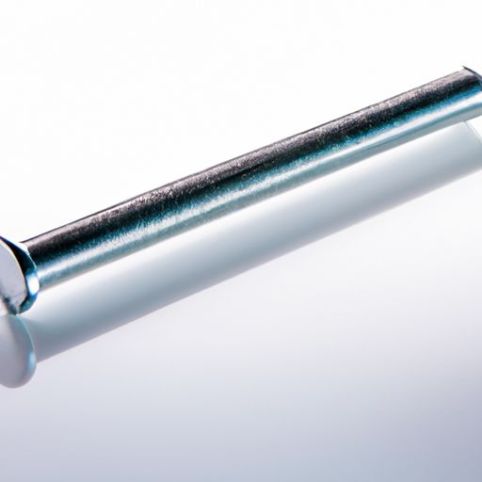Table of Contents
فوائد استخدام التجهيزات البحرية عالية الجودة للقوارب
كيفية اختيار الدرجة المناسبة من الفولاذ المقاوم للصدأ للتركيبات البحرية

يعد الفولاذ المقاوم للصدأ خيارًا شائعًا للمواد للتجهيزات البحرية نظرًا لمقاومته للتآكل ومتانته في البيئات البحرية القاسية. عندما يتعلق الأمر باختيار الدرجة المناسبة من الفولاذ المقاوم للصدأ للتجهيزات البحرية، هناك خياران شائعان: الفولاذ المقاوم للصدأ 304 و316. يوفر كلا الصفين مقاومة ممتازة للتآكل، ولكن هناك بعض الاختلافات الرئيسية التي يمكن أن تساعدك في تحديد الدرجة الأكثر ملاءمة لتطبيقك البحري المحدد.
الفولاذ المقاوم للصدأ 304 عبارة عن درجة متعددة الاستخدامات ومستخدمة على نطاق واسع من الفولاذ المقاوم للصدأ ومناسبة لمجموعة واسعة من الاستخدامات. مجموعة من التطبيقات، بما في ذلك التجهيزات البحرية. يحتوي على نسبة أعلى من الكروم والنيكل مقارنة بالدرجات الأخرى، مما يمنحه مقاومة جيدة للتآكل في البيئات المعتدلة. ومع ذلك، فإن الفولاذ المقاوم للصدأ 304 ليس مقاومًا للتآكل في البيئات البحرية القاسية مع مستويات عالية من التعرض للمياه المالحة. إذا كانت التركيبات البحرية الخاصة بك معرضة للمياه المالحة أو غيرها من العناصر المسببة للتآكل، فقد ترغب في التفكير في الترقية إلى الفولاذ المقاوم للصدأ 316.
الفولاذ المقاوم للصدأ 316 هو درجة أعلى من الفولاذ المقاوم للصدأ يحتوي على عناصر إضافية مثل الموليبدينوم، مما يعزز مقاومته للتآكل. وخاصة في البيئات البحرية. وهذا يجعل الفولاذ المقاوم للصدأ 316 هو الخيار المفضل للتركيبات البحرية التي ستتعرض للمياه المالحة والرطوبة والعناصر المسببة للتآكل الأخرى. في حين أن الفولاذ المقاوم للصدأ 316 أغلى من الفولاذ المقاوم للصدأ 304، فإن مقاومة التآكل الإضافية يمكن أن تساعد في إطالة عمر التركيبات البحرية وتقليل تكاليف الصيانة على المدى الطويل.
عند اختيار الدرجة المناسبة من الفولاذ المقاوم للصدأ للتركيبات البحرية، فمن المناسب من المهم مراعاة الظروف المحددة التي ستتعرض لها تركيباتك. إذا كانت تجهيزاتك ستُستخدم في بيئات معتدلة مع الحد الأدنى من التعرض للمياه المالحة، فقد يكون الفولاذ المقاوم للصدأ 304 كافيًا. ومع ذلك، إذا كانت تجهيزاتك ستتعرض لظروف بحرية قاسية، مثل التعرض للمياه المالحة والرطوبة ودرجات الحرارة المرتفعة، فمن المستحسن اختيار الفولاذ المقاوم للصدأ 316 للحصول على مقاومة فائقة للتآكل ومتانة.
بالإضافة إلى اختيار الدرجة المناسبة من الفولاذ المقاوم للصدأ، من المهم أيضًا مراعاة تشطيب الفولاذ المقاوم للصدأ للتركيبات البحرية. تحظى التشطيبات المصقولة المصنوعة من الفولاذ المقاوم للصدأ بشعبية كبيرة في التطبيقات البحرية نظرًا لجاذبيتها الجمالية ومقاومتها للتآكل. تعتبر الكشتبانات الأنبوبية المصقولة المصنوعة من أسلاك الفولاذ المقاوم للصدأ خيارًا شائعًا للتركيبات البحرية نظرًا لمظهرها الأنيق ومتانتها في البيئات البحرية. تقدم JRSGS تجهيزات بحرية مخصصة عالية الجودة مصنوعة من كشتبانات أنابيب حبل أسلاك الفولاذ المقاوم للصدأ المصقولة في درجتي الفولاذ المقاوم للصدأ 304 و316.
في الختام، يعد اختيار الدرجة المناسبة من الفولاذ المقاوم للصدأ للتركيبات البحرية أمرًا ضروريًا لضمان طول عمر وأداء التركيبات الخاصة بك في البيئات البحرية القاسية. في حين أن كلا من الفولاذ المقاوم للصدأ 304 و316 يوفران مقاومة للتآكل، فإن الفولاذ المقاوم للصدأ 316 هو الخيار المفضل للتركيبات البحرية التي ستتعرض للمياه المالحة والعناصر المسببة للتآكل الأخرى. من خلال اختيار الدرجة المناسبة من الفولاذ المقاوم للصدأ واختيار التشطيبات المصقولة، يمكنك التأكد من أن تجهيزاتك البحرية ستتحمل قسوة البيئات البحرية وتحافظ على مظهرها لسنوات قادمة.
Stainless Steel is a popular material choice for marine fittings due to its corrosion resistance and durability in harsh marine environments. When it comes to selecting the right grade of stainless steel for marine fittings, there are two common options: 304 and 316 stainless steel. Both grades offer excellent corrosion resistance, but there are some key differences that can help you determine which grade is best suited for your specific marine application.
304 stainless steel is a versatile and widely used grade of stainless steel that is suitable for a wide range of applications, including marine fittings. It contains a higher percentage of chromium and Nickel compared to other grades, which gives it good corrosion resistance in mild environments. However, 304 stainless steel is not as resistant to corrosion in harsh marine environments with high Levels of saltwater exposure. If your marine fittings will be exposed to saltwater or other corrosive elements, you may want to consider upgrading to 316 stainless steel.
316 stainless steel is a higher grade of stainless steel that contains additional elements such as Molybdenum, which enhances its corrosion resistance, especially in marine environments. This makes 316 stainless steel the preferred choice for marine fittings that will be exposed to saltwater, humidity, and other corrosive elements. While 316 stainless steel is more expensive than 304 stainless steel, the added corrosion resistance can help prolong the lifespan of your marine fittings and reduce maintenance costs in the long run.
When choosing the right grade of stainless steel for marine fittings, it is important to consider the specific conditions that your fittings will be exposed to. If your fittings will be used in mild environments with minimal exposure to saltwater, 304 stainless steel may be sufficient. However, if your fittings will be subjected to harsh marine conditions, such as saltwater exposure, humidity, and high temperatures, it is recommended to opt for 316 stainless steel for superior corrosion resistance and durability.
In addition to selecting the right grade of stainless steel, it is also important to consider the finish of the stainless steel for marine fittings. Polished stainless steel finishes are popular for marine applications due to their aesthetic appeal and resistance to corrosion. Polished stainless steel wire Rope tube Thimbles are a common choice for marine fittings due to their sleek appearance and durability in marine environments. JRSGS offers customized high-quality marine fittings made from polished stainless steel wire rope tube thimbles in both 304 and 316 stainless steel grades.
In conclusion, choosing the right grade of stainless steel for marine fittings is essential to ensure the longevity and performance of your fittings in harsh marine environments. While both 304 and 316 stainless steel offer corrosion resistance, 316 stainless steel is the preferred choice for marine fittings that will be exposed to saltwater and other corrosive elements. By selecting the appropriate grade of stainless steel and opting for polished finishes, you can ensure that your marine fittings will withstand the rigors of marine environments and maintain their appearance for years to come.
